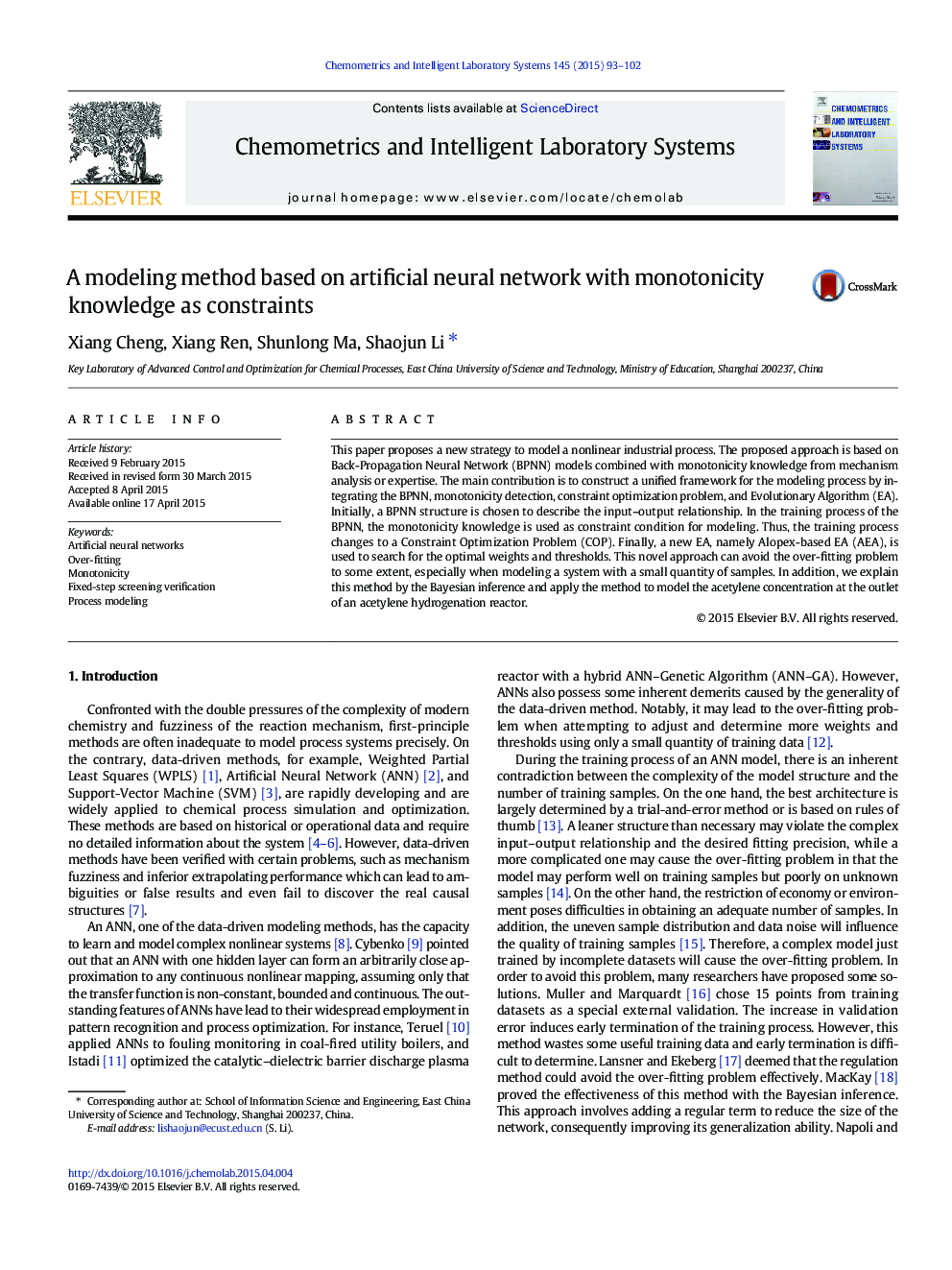| Article ID | Journal | Published Year | Pages | File Type |
|---|---|---|---|---|
| 1179292 | Chemometrics and Intelligent Laboratory Systems | 2015 | 10 Pages |
•A unified modeling framework is proposed by integrating BPNN with monotonicity.•Optimizing BPNN with constraint problem by using evolutionary algorithm•Fixed-step screening verification is proposed to test the monotonicity knowledge.•Explanation for the proposed method through the Bayesian inference•Modeling the acetylene hydrogenation reactor with 4 methods
This paper proposes a new strategy to model a nonlinear industrial process. The proposed approach is based on Back-Propagation Neural Network (BPNN) models combined with monotonicity knowledge from mechanism analysis or expertise. The main contribution is to construct a unified framework for the modeling process by integrating the BPNN, monotonicity detection, constraint optimization problem, and Evolutionary Algorithm (EA). Initially, a BPNN structure is chosen to describe the input–output relationship. In the training process of the BPNN, the monotonicity knowledge is used as constraint condition for modeling. Thus, the training process changes to a Constraint Optimization Problem (COP). Finally, a new EA, namely Alopex-based EA (AEA), is used to search for the optimal weights and thresholds. This novel approach can avoid the over-fitting problem to some extent, especially when modeling a system with a small quantity of samples. In addition, we explain this method by the Bayesian inference and apply the method to model the acetylene concentration at the outlet of an acetylene hydrogenation reactor.
